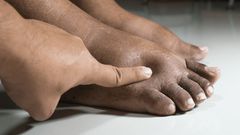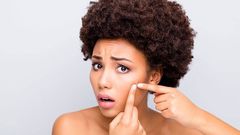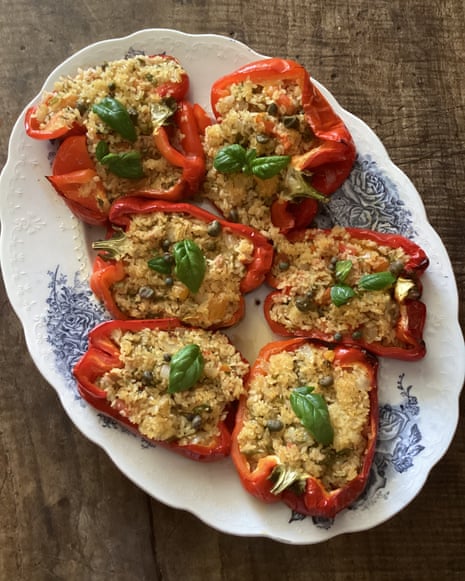If you’re active on TikTok or other social platforms these days, you might have come across the buzz around ‘skin cycling.’ Trendy “before and after” clips and glowing testimonials have made it a staple in the feeds of skincare lovers in Lagos, Accra, and beyond. Both beauty influencers and top dermatologists are praising this technique, claiming it’s a much smarter, safer way to reap the benefits of active skincare without damaging the crucial skin barrier.
The concept went mainstream thanks to US dermatologist Dr. Whitney Bowe, who describes skin cycling as a method to help you achieve smoother skin texture and fight acne by rotating, rather than constantly layering, your skincare products. It all sounds doable. But West Africans know how unpredictable our climate can be—from intense humidity to sweltering heat. Is this viral routine really practical for our skin concerns?
Quick answer: Absolutely, but you’ll need to make a few key modifications for our humid environments.
Here’s a deep dive, tailored for Nigerian and West African living.
What Is Skin Cycling?
Skin cycling is structured as a four-night regimen that alternates between using potent actives—like exfoliants and retinoids—and simply letting the skin rest. Think of it as intermittent fasting for your beauty shelf: some nights are “active,” others are strictly for recovery. The science is simple—by not bombarding your skin with several products at once, you reduce the risk of irritation and give your skin barrier time to heal and adapt.
Why has skin cycling gone viral? Besides being easier and less wasteful, it allows your skin to “breathe.” Initially, the practice gained traction in professional circles. But once TikTok creators started posting dramatic transformation videos, the method exploded in popularity—reports suggest that the hashtag #skincycling has garnered hundreds of millions of views to date, attracting everyone from beauty novices to skincare obsessives.
Dr. Whitney Bowe, who is widely acknowledged as the pioneer of this method, emphasizes that even beneficial ingredients like hydroxy acids and retinoids can become harsh if overused. “It’s about striking a balance between using strong actives and letting your skin recover,” Dr. Bowe has explained in interviews. This structured, cyclical approach means you’re supported instead of stressed—leading to more even skin tone, fewer pimples, and a glow that translates well both online and offline.
In summary: the magic of skin cycling is in its simplicity—alternating between nights with and without powerful actives yields results that go beyond what aggressive routines can promise.
Nigeria’s Humid Climate and Skin Concerns
If you’ve ever commuted through Lagos traffic or braved a typical afternoon in Accra, you know that humidity is a daily challenge. Your face might feel fresh after a morning wash, but by lunchtime, oil and sweat have made a comeback. Heavy creams can feel suffocating and makeup rarely stays put for long periods.
Throw in city pollution and hours spent exposed to the elements, and it’s no surprise that West Africans often deal with skin congestion. Some of the major skin issues triggered by our tropical weather include:
-
Breakouts and acne from excess sweat and oil clogging pores
-
Persistent shininess and oily skin texture
-
Heat rashes and sweat-related fungal infections
-
Hyperpigmentation and uneven tone from sunlight and environmental stressors
Before introducing complicated routines, it’s clear our skin already faces tough daily battles—which makes tailoring methods like skin cycling even more important for us.
Does Skin Cycling Work Here?
The verdict: skin cycling remains effective, but requires rethinking for our climate.
In humid regions, increased sweating and oil production mean a greater risk of clogged pores—especially if you’re using thick or heavy products. According to Lagos-based dermatologist Dr. Titi Ogunleye, “West African skin is exposed to high moisture and pollution, so routines from drier climates can be counterproductive here.” She recommends keeping routines lightweight and breathable, especially during the sticky rainy season.
In essence, adapting skin cycling to suit Nigeria or Ghana isn’t about discarding it altogether, but about trimming down to essentials: opt for lighter, gel-based, or water-based products, and focus on a routine that lets the skin recover between actives. This
ensures effectiveness without suffocating your pores.
Sample 4-Day Skin Cycling Plan for Humid Climates
Here’s a personalized skin cycling routine that’s humidity-proof and suitable for West African skin:
Night 1: Exfoliate
Use a gentle glycolic acid toner (like The Ordinary Glycolic Acid 7% Toning Solution) to whisk away sweat and sunscreen buildup. Avoid harsh scrubs or stinging peels, as these can exacerbate irritation.
Night 2: Recovery
Skip all actives. Reach for a calming, hydrating essence with soothing ingredients—think aloe vera or rice water—and seal in with a lightweight, oil-free moisturiser. This night is all about letting your skin recharge.
Night 3: Active Treatment
Apply a retinoid or retinol product. “Start with a lower concentration if you’re new to retinoids,” suggests Dr. Ogunleye. This night targets wrinkles, texture, and breakouts.
Night 4: Deep Hydration
Focus on moisture. A gel-based face cream and a hydrating sheet mask can leave skin plump by morning—without the greasy afterfeel.
Every morning, the routine stays the same: gentle gel cleanser, lightweight moisturiser, and non-greasy gel sunscreen. This shields skin against sun and pollution, essentials for city dwellers.
For those just discovering skincare, it helps to start with tried-and-true basics like CeraVe Foaming Cleanser, which effectively removes sweat and grime without drying out the skin. Pair this with hydrating yet lightweight actives—your skin will reward you over time.
Expert Tips for Skin Cycling in West Africa
To successfully adapt skin cycling for local conditions, follow these expert recommendations:
-
Go for gel or foaming cleansers: Cream-based products can leave residue and feel heavy in our climate. Gel cleansers sweep away excess oil without stripping your skin.
-
Pick non-comedogenic moisturisers: Always check for ‘oil-free’ or ‘non-comedogenic’ on the label. This limits clogged pores, even as you lock in hydration.
-
Sunscreen is non-negotiable: Humidity doesn’t dilute UV damage. Look for lightweight or gel-based sunscreens for comfort.
-
Use face mists and sheet masks: Far from being a luxury, these offer instant cooling relief in hot, sticky weather and help combat mid-day dullness.
-
Consistency wins: Overcomplicating your routine with too many actives or harsh products can backfire. Stick to simple steps, and give skin time to recover and respond.
Daily, no matter your cycle: Wash, moisturise, and protect with sunscreen before stepping outside.
In summary, skin cycling isn’t just a fleeting trend but a method that, when simplified and adapted, fits perfectly into the everyday realities of Nigerians, Ghanaians, and others living with the challenges of tropical weather. The ultimate goal isn’t to mimic routines designed for colder climates but to amplify what works locally: lighter layers, diligent cleansing, and unwavering sun protection. Over time, you’ll see a natural, healthy glow and calmer skin—no filter necessary.
Have you tried skin cycling in Nigeria, Ghana, or anywhere in West Africa? What changes worked—or didn’t—for your skin in this climate? Share your thoughts and personal experiences in the comments below. We’d love to hear your skin secrets, challenges, and tips!
Want your skincare story featured or have a tip to share? We welcome your stories! Email us at story@nowahalazone.com to get your voice heard, share results, or discuss story sales.
For support, reach out at support@nowahalazone.com.
Stay in the loop—follow us on Facebook, X (Twitter), and Instagram for beauty tips, real stories, and more interactive content!










